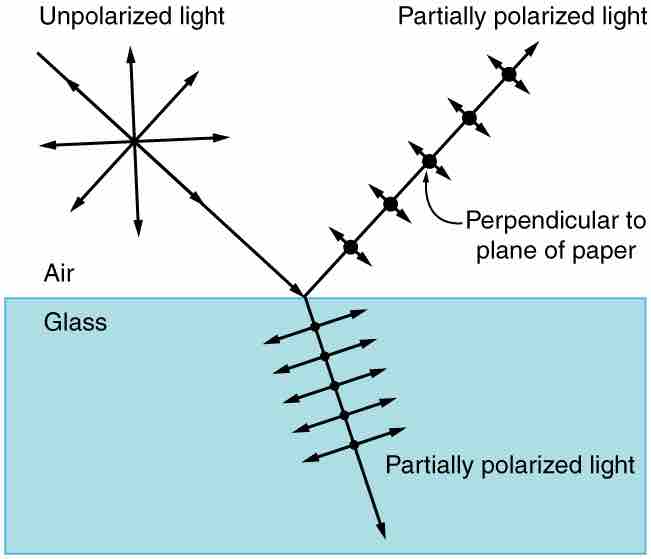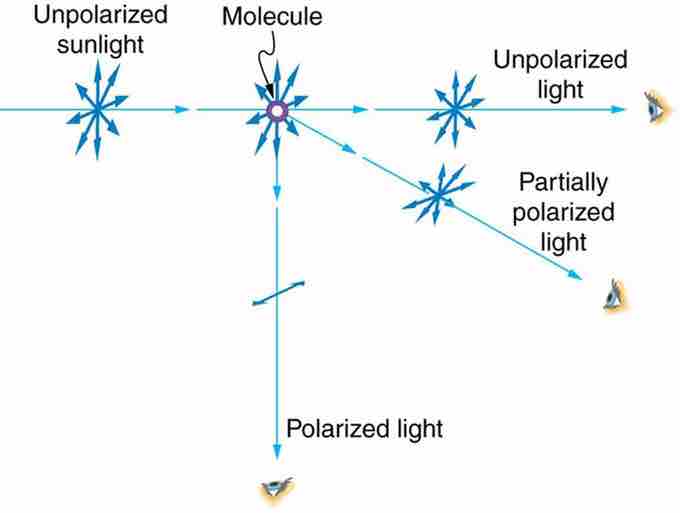Polarization by Reflection
In the previous atom we discussed how polarized lenses work. In the case of polarized sunglasses, for example, when you look through them, reflected light is not entirely filtered out; reflected light can be slightly polarized by the reflection process (as shown in ). Most light sources produce unpolarized light. When light hits a reflective surface, the vertically polarized aspects of that light are refracted at that surface. The reflected light is more horizontally polarized. To better remember this, we can think of light as an arrow and the reflective surface as a target. If the arrow hits the target perpendicularly (vertically polarized), it is going to stick in the target (be refracted into the surface). If the arrow hits the target on its side (horizontally polarized) then it will bounce right off (be reflected).

Polarization by Reflection
Unpolarized light has equal amounts of vertical and horizontal polarization. After interaction with a surface, the vertical components are preferentially absorbed or refracted, leaving the reflected light more horizontally polarized. This is akin to arrows striking on their sides bouncing off, whereas arrows striking on their tips go into the surface.
Since the light is split into two, and part of it is refracted, the amount of polarization to the reflected light depends on the index of refraction of the reflective surface. We can use the following equation to determine the angle of reflection at which light will be completely polarized:
where: θb = angle of reflection of complete polarization (also known as Brewster's angle); n1 = index of refraction of medium in which reflected light will travel; and n2 = index of refraction of medium by which light is reflected.
Polarization by Scattering
Just as unpolarized light can be partially polarized by reflecting, it can also be polarized by scattering (also known as Rayleigh scattering; illustrated in ). Since light waves are electromagnetic (EM) waves (and EM waves are transverse waves) they will vibrate the electrons of air molecules perpendicular to the direction in which they are traveling. The electrons then produce radiation (acting like small antennae) that is polarized perpendicular to the direction of the ray. The light parallel to the original ray has no polarization. The light perpendicular to the original ray is completely polarized. In all other directions, the light scattered by air will be partially polarized.

Polarization by Scattering
Also known as Rayleigh scattering. Unpolarized light scattering from air molecules shakes their electrons perpendicular to the direction of the original ray. The scattered light therefore has a polarization perpendicular to the original direction and none parallel to the original direction.